Yoga is a common exercise routine that is known to relieve pain and stress in the body. It is also known as a great way to relieve mental stress. However, some Yoga poses can put pressure on the neck and lead to injury or pain. Especially for beginners or those who already suffer from neck pain, it is important to be mindful of these poses to avoid injuries. This article contains a list of Yoga poses to avoid with neck problems. Read on to know more.
Common reasons for neck pain in the modern world

A significant amount of time every day goes into using phones and other screens. When the screen is below eye level, the head and shoulders bend forward and become rounded. Also, as we look down using the screen, the head hangs down and strains the neck. While all of us understand this, it is hard to break free from that habit and stop looking at screens. Some other reasons for neck pain include poor sitting postures, improper bedding and pillows and strenuous exercises.
Why is neck alignment important?

The muscles in the front of our necks are known as cervical flexors. They help the head to flex forward and allow the chin to move towards the chest. The regular forward rounding of the neck causes these muscles to be locked short.
The muscles in the back of the neck are known as cervical extensors. They help to bend the neck backwards and take the chin toward the sky. When we regularly bend our heads toward the front, the cervical extensors are continually in a lengthened state and thus get locked long. The muscles on the back of the skull are known as sub occipitals and they are also locked short when we regularly keep our neck in a forward rounded position. The sub-occipitals also go through a lot of stress while supporting the head in this position. This causes headaches and neck pain. Thus, continuing to be in posture for long, affects strength and stability.
Some trials indicated that Yoga can help relieve neck pain. However, some can worsen the pain and thus must be avoided.
How to avoid neck pain and keep your spine healthy
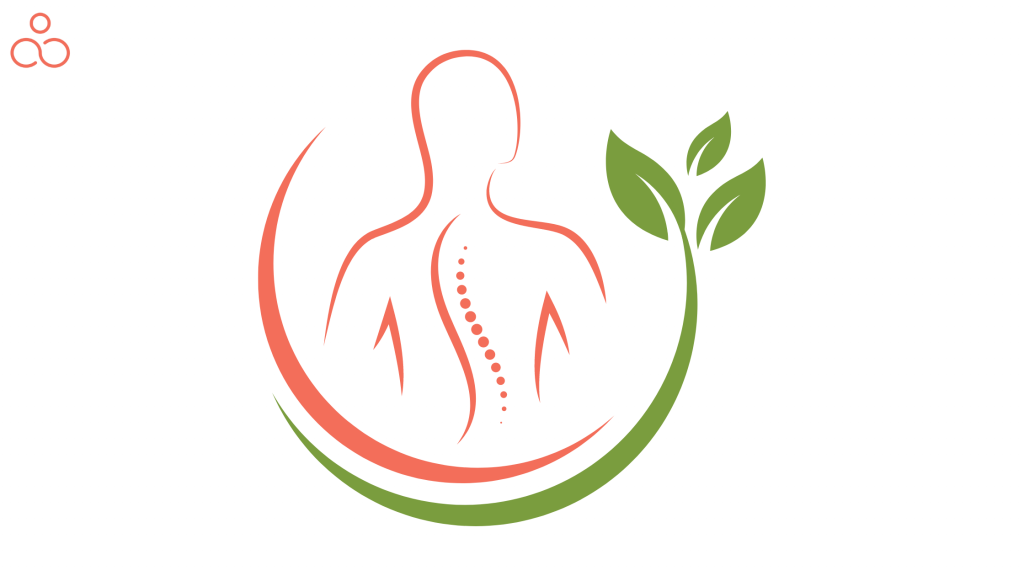
Aging, improper postures, poor lifestyle choices, mental stress, physical trauma and injuries and growths such as cysts and tumors are some common causes of neck pain. Proper care and adequate precautions can help to avoid neck pain. Below are some of them:
- Be mindful of your posture
- Do not use a very thick and hard pillow
- Take breaks between work and stretch your neck
- Use hot and cold compresses to relieve pain and inflammation in the neck
- Work to reduce stress as it can cause strain in the neck and lead to pain
- Exercise regularly to maintain strength in the muscles
Yoga poses to avoid with neck problems
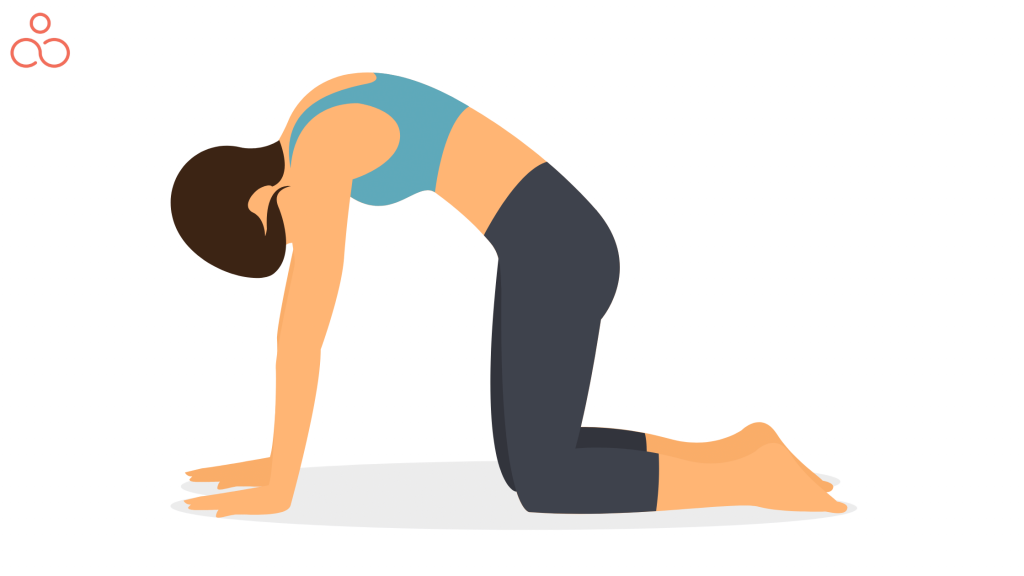
While Yoga has a multitude of benefits, some poses can aggravate neck pain.
Taking extra care of the neck while performing these poses can help to avoid pain. Ignoring the pain and going on with the poses can be counterproductive and injure you.
It is thus important to take steps to ensure that your practice is safe and ideal for your skill level and body abilities.
This article will talk about Yoga poses that can hurt your neck. It also contains ways to avoid neck pain and other pointers to help you get the best out of your Yoga practice.
Below are the neck-straining Yoga poses that you must avoid if you are already struggling with neck injuries.
Headstand Pose (Sirsasana)
This is almost like a no-brainer. The pose requires so much core and upper body strength that it can easily hurt your head and neck if you don’t have enough. This is because the neck will then have to balance the entire body weight and it is not strong enough to do so. Beginners must thus stay away from this pose and work towards it by strengthening the upper body. Some poses that can help to work up to that strength include forearm plank and downward-facing dog.
Once you feel that you have adequate core strength, you can try a headstand. However, it is first important to test if your core is ready.
- Testing if your core is ready for a headstand: You can test your core by lifting your feet and tucking your legs in the chest for 5 seconds before lifting the legs upward into a headstand.
- Finding the right position: To find the right position for your headstand, place the palm facing downward near the nose and the middle finger near the top of the head. This position will offer stability and support.
- Seeking help from another person: While advanced Yoga practitioners can easily use the walls by themselves, external help can be useful if you are not there yet. If there is another person who can spot and adjust your position, there is a higher chance of being in a safe position.
- Try other poses using the wall: As you prepare for a headstand, it may be helpful to try other inverted poses like the half shoulder stand or legs up the wall. Some practitioners also use an inversion sling to practice hanging upside down.
- Other Tips: It is important to not move the head at all while maintaining a headstand. Also, ensure that there is no sensation or pressure in the head.
Fish pose (Matsyasana)
The fish pose is a back-bending pose that can cause the neck to hyperextend. This can cause discomfort or injury. It is important to lower the head slowly toward the back to avoid pain. If you do not feel comfortable, get back to your normal position. Some easier and safer variations for the fish pose are below:
- Seek help from someone to spot you while dropping the head back.
- Keep the chin tucked in the chest or support the head using blocks and cushions.
- Support the length of the back using a bolster or folded towel
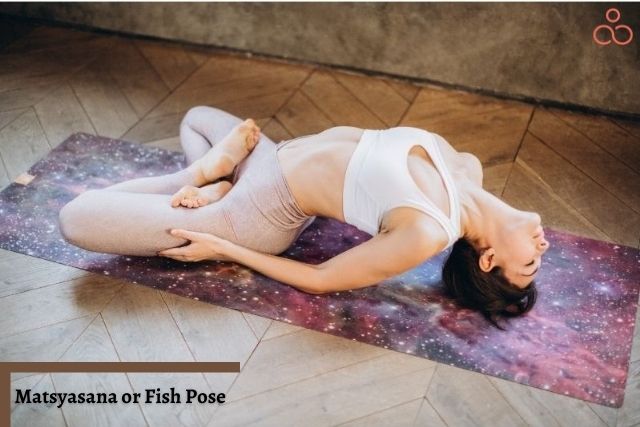
Upward-facing Dog (Urdhva Mukha Svanasana)
Letting the head drop back always poses risks to the neck if not done carefully. The upward-facing dog is no different. Some ways to mitigate neck pain include keeping the chin parallel to the floor and maintaining the gaze at a point right in the front or slightly down. You can also keep the shoulders back, away from the ears.
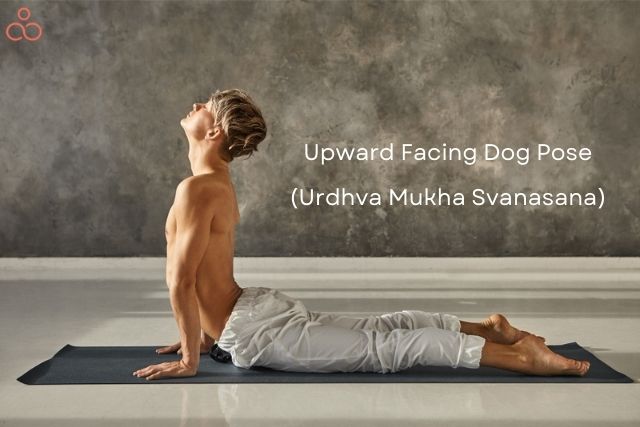
Sarvangasana Yoga (Shoulderstand Pose)
A shoulderstand stresses the neck and overstretching due to it can cause pain or injury. Some ways to work around it are below:
- Support and give an extra lift to your shoulders using a towel, cushion, or folded blanket under them. This will cushion them and also help to avoid extra pressure as you rest your head on the floor. As you do this, do not move the neck and keep the chin tucked into the chest.
Plow Pose (Halasana)
A shoulderstand is often accompanied by the plow pose and can also stress the neck. To stay safe while doing the plow pose in Yoga, support your lower back using your hands. Practitioners whose feet don’t touch the ground find this even more helpful. Further, support your feet using a chair, Yoga blocks, or cushions.
Cobra Pose (Bhujangasana)
The Cobra is also a back-bending pose that can hurt the neck when the head drops back. The sphinx pose is an alternative to the cobra pose that is easier on the neck. Modify the cobra pose by looking down and tucking your chin. Alternatively, you can also level the chin with the floor. A half-cobra pose can also be a good alternative that requires you to come up only partly.
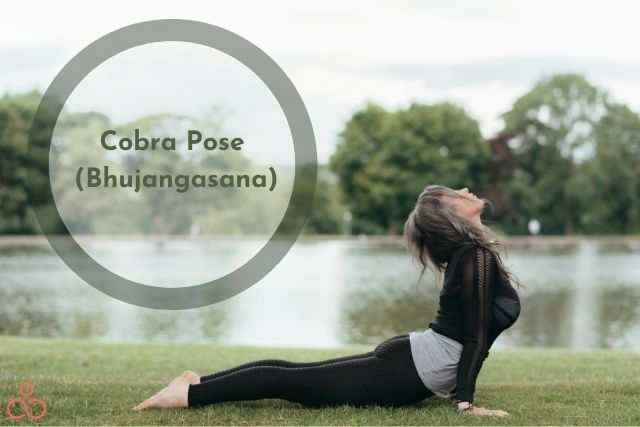
Triangle Pose Yoga (Trikonasana)
The triangle Yoga pose is a standing pose that can stress both the neck and shoulders. It can help to add neck rolls. To do so, look up toward the ceiling and then to the ground. You can also make the pose more comfortable by tucking the chin slightly as you turn the face upward and look above. It is also a good idea to bring the head down and rest the ear on the shoulder.
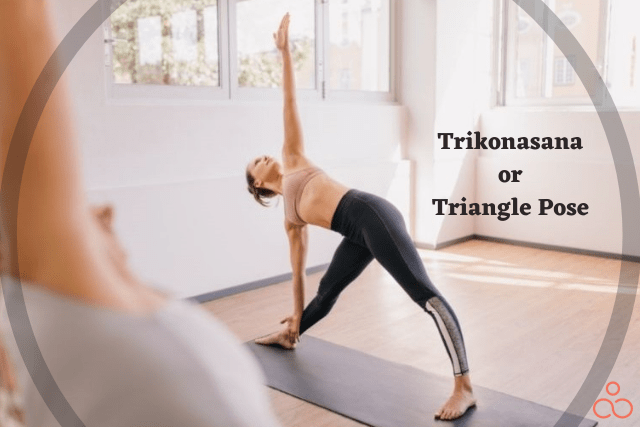
Extended Side Angle Pose (Utthita Parshvakonasana) and Half Moon Pose (Ardha Chandrasana)
The neck position in both these poses is also the same as the triangle pose and the same changes can be incorporated to make it safer and more comfortable.

Twisting poses
There is a wide variety of twisting poses in Yoga. These include seated, standing and supine twists. It is common for practitioners to stretch the neck too far and strain it while performing these twists. You must remember that the twist must begin at the base of the spine to go deeper into the pose and still avoid the strain.
Concentrate and ensure that the twist focuses on the spine and the neck stays comfortable. If the chin is tucked in toward the chest, it can help to avoid the strain of twisting poses. It is also ok to look in the opposite direction or maintain the head in the neutral position as long as you achieve the twist in the spine.
Aerial Yoga
Aerial Yoga requires you to perform Yoga poses while using a hammock. It also includes inversions, backbends, and shoulderstand and requires a significant amount of strength. It is easy to hurt your neck in aerial Yoga if you do not exercise caution. An inversion sling can be a good investment and help to avoid injuries.
Keep your specific health conditions in mind
Practitioners already struggling with neck issues or arthritis are at a higher risk of neck strain while performing Yoga poses. If you are one of them, take special care to avoid poses that cause strain. If you are a beginner, it is a good idea to inform your trainer about your health conditions so they support you better.
Those with osteopenia or osteoporosis are also more likely to suffer strains and compression fractures in the vertebrae.
Tips for beginners to practice Yoga without hurting their neck
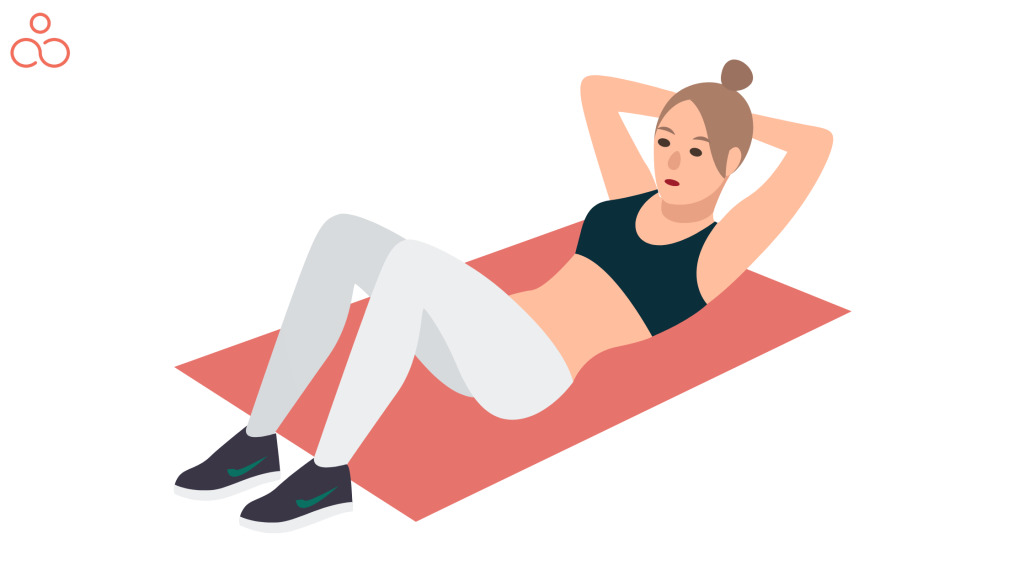
- Find a gentle and inclusive teacher who is ready to support you in the journey. Once you discuss your pains or concerns with them, they can suggest modifications and ways to keep pain and discomfort at bay while continuing to deepen your practice.
- Let your breath guide you. This will help you understand your pain and discomfort better. If you are unable to maintain your breath smoothly, it may be time to slow down.
- Adequate rest and hydration are quintessential for your success as a yogi. If you are not well rested, you may feel fatigued and this will increase the possibility of injury.
- Do not feel embarrassed to skip poses that you are not comfortable with. Let the class carry on with their flow while you can get into the child’s pose or any other pose that you feel comfortable with.
- If some poses are difficult to strike because it feels uncomfortable to hang the neck back, lie down on the bed and place your shoulders at the edge. Now, try to take the head back. It will be easier to do if there is someone to spot you. Maintain the hanging position for up to five mins and then get into the resting position.
How to relieve pain if you strain your neck?
- Massages and hot salt baths can help to relieve pains if you have somehow strained yourself already
- Apply a hot or cold compress to the area where you are experiencing pain
- Take over-the-counter pain relievers
- Perform pain-relieving Yoga poses
Yoga poses to relieve neck pain

While the poses above are among the Yoga poses to avoid when you have neck pain, several poses can relieve neck pain. Here is how Yoga can relieve neck pain:
- Helps to correct any imbalances in the muscles
- Strengthens the muscles that control the movement of the neck, head, torso, and shoulders
- Helps to activate the neck muscles and relieves the stress in joints
- Improves body posture
- Increases core strength
- Helps to sleep better
- Makes the shoulders and cervical spine more mobile
- Improves balance and stability and reduces the risk of injury
Below are some additional Yoga poses that can help to relieve neck pain
- Side plank pose (Utthita Vasisthasana)
- Camel pose (Ustrasana)
- Standing forward bend pose (Uttanasana)
- Extended triangle pose (Utthita Trikonasana)
- Cat-cow pose (Bitilasana Marjaryasana)
- Dolphin pose (Ardha Pincha Mayurasana)
- Warrior II pose (Virabhadrasana II)
- Child’s pose (Balasana)
- Half lord of the fishes pose (Ardha Matsyendrasana)
- Sphinx pose (Salamba Bhujangasana)
FAQ’s
Can Yoga cause damage to the neck?
Yoga is a holistic routine that unleashes many benefits for the body. It helps to relieve pain and stiffness in various parts of the body and cannot cause damage unless the posture is completely off. Inexperienced practitioners must not try Yoga without expert supervision. It is also important to stop if a pose feels uncomfortable. Adequate care and caution can help to maximize the benefits without straining the neck.
How to relieve a strained neck?
Poor sleeping positions, long hours in front of the computer and improper workout form can cause a strained neck. You must stretch your neck in the morning to relieve the stiffness. If your job requires looking at the screen for a long time, stretch the neck periodically throughout the day. You can also perform Yoga poses that target the neck muscles to feel better.
What are the neck-strengthening Yoga poses?
Some Yoga asanas involve repeated movements of the neck. Combine these poses to move the neck upward, downward, sideways and in a rotatory motion. They help to strengthen the neck and keep pain at bay. Some poses are the cat/cow pose and the extended triangle pose.
Conclusion
Neck pain can be debilitating and can affect day-to-day life. It is thus important to avoid putting excessive pressure on the neck and prevent neck pains. While all Yoga poses have their advantages, it is not necessary to incorporate them all in your practice. You can thus skip these poses or build up your strength for them. You can also perform these poses in their modified forms to avoid neck stress.

